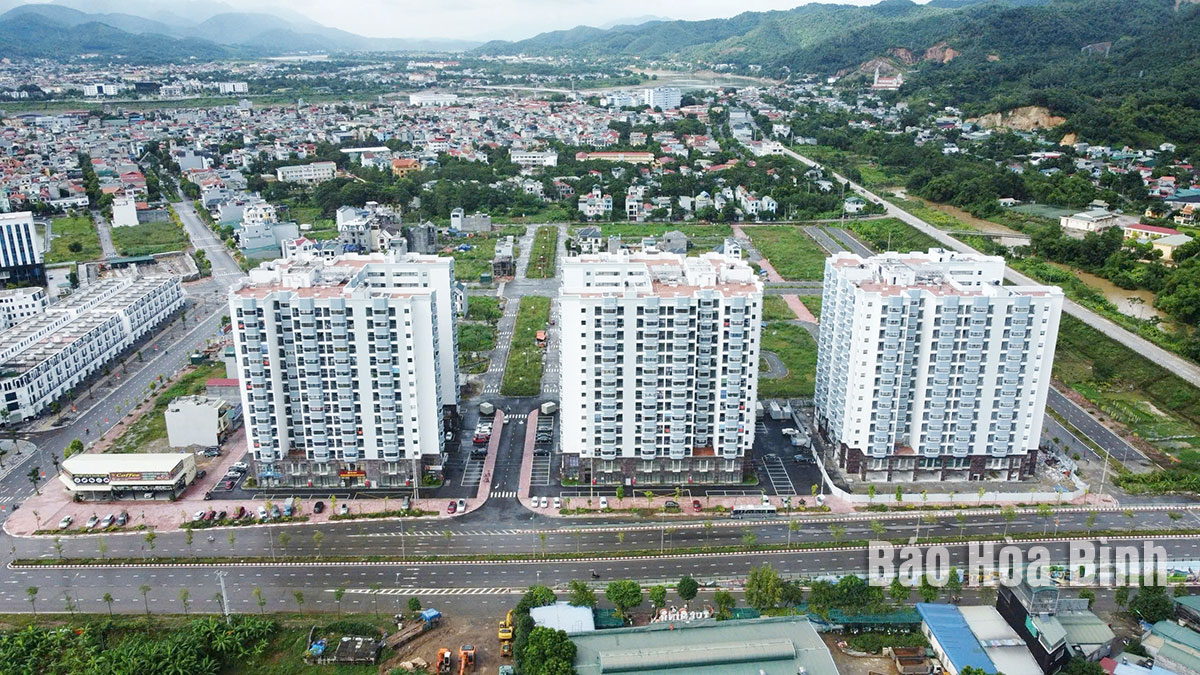
Hoa Binh city is gathering feedback from ministries and sectors regarding its proposal for tier-2 urban status. After years of development from its tier-3 foundation, the city is awaiting inclusion in the country’s list of more than 30 tier-2 urban centres.
A corner of Hoa Binh city.
For Le Minh Long, a native in Tan Thinh ward who now lives in Hai Phong city,
the transformation of his homeland is striking with high-rise building,
shopping zones, an array of services, and bustling streets.
Prior to 2010, entertainment options for young people were limited to a handful
of small coffee and fashion shops and eateries. Nowadays, shopping centres
offer everything from retail therapy to cinema experience, helping younger
generations embrace a contemporary and dynamic lifestyle.
Over the recent past,
multiple infrastructure improvement projects have been carried out, including
the upgrade of key streets like Cu Chinh Lan, An Duong Vuong, Ba Trieu, Vo Thi
Sau, Ly Nam De, and Phan Boi Chau. These projects cover sidewalk renovation,
lighting system supplement, and drainage system construction.
Besides, the city has accelerated the site clearance work for the construction
of key projects, helping create a facelift to the locality.
The economic indicators also support the city’s ambition. Over the past three
years, Hoa Binh city has maintained an average economic growth rate of 11.93%
while per capita income is 1.51 times higher than the national level. Besides,
non-agricultural employment has reached 82.2% while the poverty rate has
dropped significantly to 1.38%. According to the Ministry of Construction’s
assessment board, the metrics align with the tier-2 urban standards.
Achieving the tier-2
status, Chairman of the city People’s Committee Pham Anh Quy said, will not
only be a milestone but also a starting point for the city to continue
consolidating and improving its achieved criteria, with the ultimate goal of
improving the living quality of the local residents.
The city, boasting rich cultural, historical and ethnic traits of the
northwestern region, will keep on making breakthroughs and positioning itself
as a political, administrative, economic, cultural, social and
scientific-technical centre of Hoa Binh province.
Nguyen Phi Long, an alternate member of the Party Central Committee, Secretary of the Hoa Binh provincial Party Committee, and head of the steering committee for the province's key projects, chaired a conference on March 25 to discuss measures for implementing the project on constructing the Hoa Lac - Hoa Binh road and upgrading the Xuan Mai - Hoa Binh section of National Highway 6 under the public-private partnership (PPP) model.
Administrative reform has been identified as a key priority in enhancing state governance, improving the business environment, and facilitating services for citizens and enterprises.
The Standing Board of the Hoa Binh provincial Party Committee met on March 18 to review and guide major investment projects aimed at boosting local socio-economic development.
The air is thick with the hum of drills and the clatter of machinery as the Hoa Binh – Moc Chau expressway takes shape amid the rugged terrain. Welding sparks illuminate the faces of workers, and concrete mixers churn relentlessly, laying fresh pavement on the newly-carved road. The construction site buzzes with a palpable sense of urgency, particularly in Hoa Binh province where the expressway's future is being forged.
The northern province of Hoa Binh, with over 467,000 hectares of natural forest and more than 100,000 hectares of production forest, holds significant potential for carbon credit market development.
Replacing substandard houses with more sturdy ones by June 30 is the direction given by Nguyen Phi Long, alternate member of the Party Central Committee and Secretary of the Hoa Binh provincial Party Committee, at a meeting held in early March by the provincial Steering Committee for the programme to eliminate temporary and dilapidated houses for the needy.



